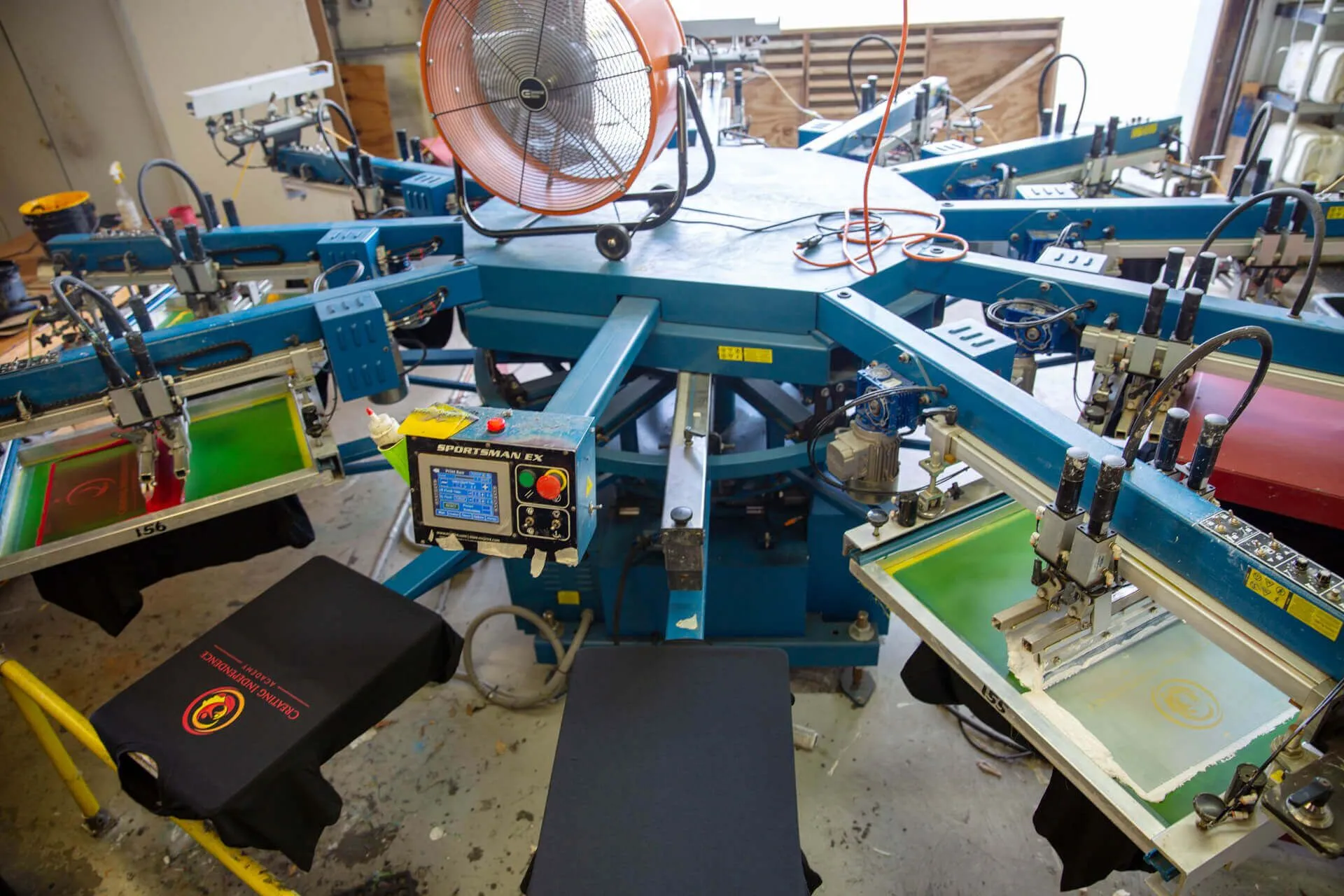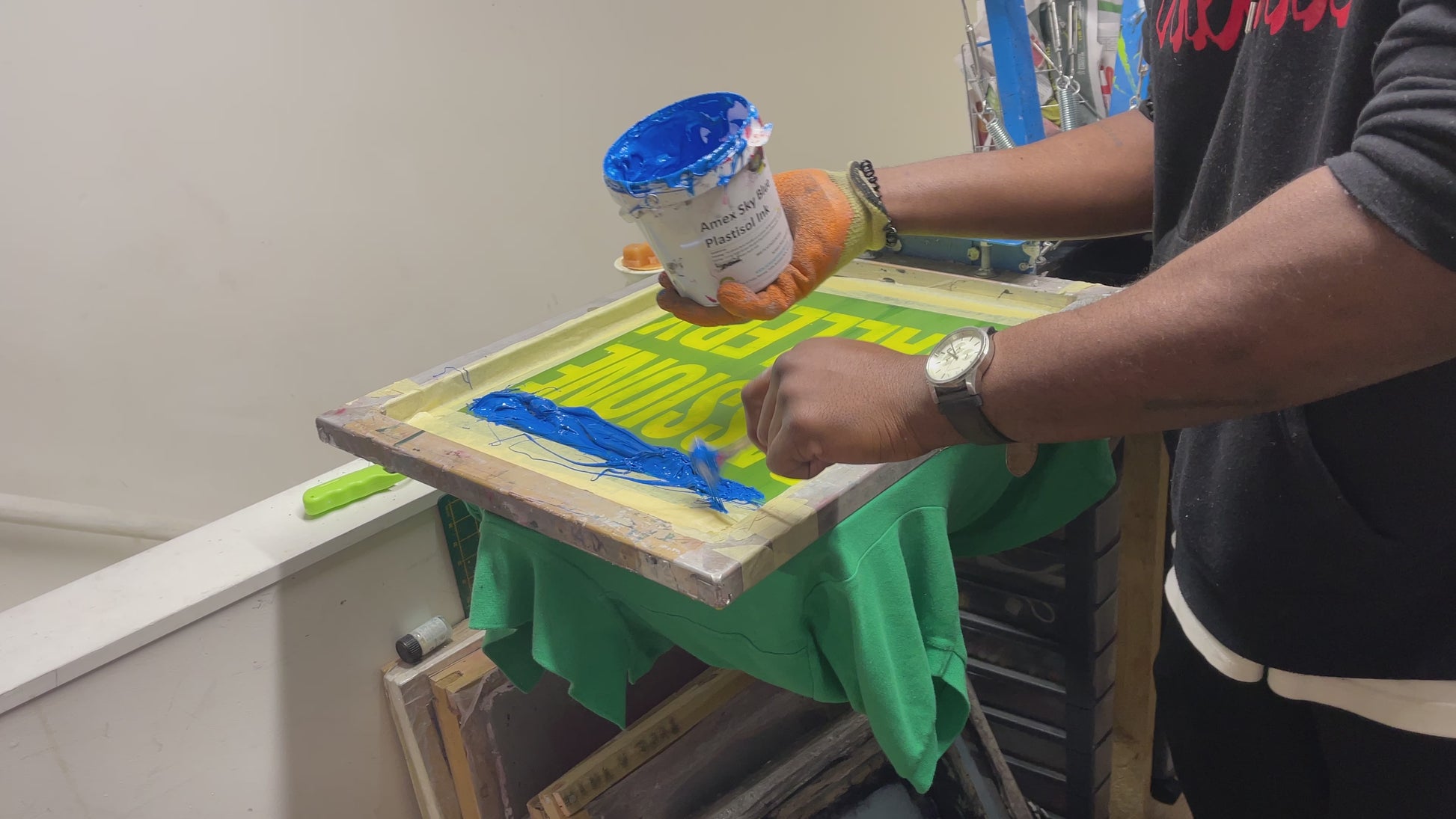Budget-Friendly T-Shirt Printing for Startups
Budget-Friendly T-Shirt Printing for Startups
Blog Article
Display Printing Uncovered: Everything You Required to Learn About Tee and Garment Printing Methods
If you've ever asked yourself exactly how those dynamic designs finish up on your preferred t-shirts, you're in the ideal location. Display printing is a fascinating technique that combines art with technique, offering endless possibilities for imagination. Understanding the fundamentals, from equipment to ink selections, can substantially impact your outcomes. Ready to explore the crucial elements that make screen publishing an art form? Let's uncover the information that can raise your jobs.
The Fundamentals of Screen Printing: Exactly How It Functions
When you plunge into display printing, you'll find it's both a science and an art. At its core, display printing includes creating a stencil, or screen, that permits ink to pass with just in specific locations (screen printing kit). You start by picking your design and preparing your screen with a light-sensitive emulsion. Once you reveal this solution to light, it hardens, leaving your layout as a negative space.
Following, you'll blend your inks and prepare your printing surface area. Setting the display over the material, after that use a squeegee to push ink with the screen onto the garment. This process needs precision, as you want clear, vibrant prints. After printing, you'll cure the ink with warmth, ensuring it follows the material and lasts via cleans. Each action is vital, and grasping them will boost your screen printing abilities, transforming straightforward garments right into special, meaningful pieces.
Kinds Of Screen Printing Techniques
When you comprehend the essentials of display printing, it's time to check out the various techniques that can raise your layouts. One preferred technique is standard display printing, where ink is pushed through a stenciled screen.
If you're aiming for fine information, think about discharge printing. This technique eliminates color from the fabric, leaving a soft, classic appearance. An additional alternative is plastisol printing, recognized for its durability and vivid colors, making it a preferred for lots of brands. Ultimately, explore halftone printing to create gradient results and intricate designs. Each strategy has its distinct beauty, so don't think twice to try them out to locate what fits your design best!
Essential Tools for Display Printing
To achieve sensational cause display printing, having the appropriate tools is basic. You'll need a durable display printing structure, which holds the mesh that transfers your design onto the garment. Next off, purchase top quality mops; these are crucial for applying ink equally throughout the display. You'll likewise need a great exposure unit to produce your screens, as well as a washout cubicle for cleansing them after use. A trustworthy warmth source, like a conveyor clothes dryer or warmth press, is essential for curing your prints to assure longevity. Don't forget a proper workspace, equipped with tables and storage for your supplies. Protective gear, such as gloves and masks, will certainly maintain you risk-free from chemicals and inks. With the right tools, you'll be well on your way to generating professional-quality prints.
Choosing the Right Inks and Materials
When selecting inks and products for display printing, you need to consider the type of ink that functions ideal for your task. Assume concerning textile compatibility to guarantee your layouts look last and excellent lengthy. Check out environment-friendly ink options to make your printing process more lasting.
Kinds Of Display Inks
Picking the appropriate display ink is essential for achieving vibrant, long lasting prints that meet your project's needs. There are a number of types of screen inks to analyze. Specialty inks, such as metal or glow-in-the-dark, can add special results to your designs.

Textile Compatibility Considerations
Understanding textile compatibility is essential for attaining high-quality display prints, especially because different products respond distinctly to different inks. When choosing inks, consider the material kind-- cotton, polyester, or blends. For cotton, water-based inks work well, using softness and breathability. Polyester, on the other hand, commonly needs plastisol inks for far better attachment and vibrant colors. You might require to use a combination of both kinds if you're publishing on blends. Always evaluate your inks on example material to assure they stick properly and keep color integrity. Additionally, bear in mind that fabric weight and texture can affect the last outcome, so selecting the right ink and product combo is crucial for your task's success.
Eco-Friendly Ink Options
Green inks are becoming a preferred choice for screen printers that desire to minimize their environmental effect while keeping high quality. When choosing inks, think about water-based inks, which are much less unsafe and much easier to cleanse up contrasted to traditional solvents.
In addition, seek inks made from sustainable sources, such as soy or vegetable-based choices. By choosing the right inks and products, you'll not only develop magnificent styles yet also add to an extra lasting printing procedure. Make the button, and your prints will reflect your dedication to the atmosphere!
Preparing Your Layout for Screen Printing

File Layout Requirements
To assure your layout looks sharp and vivid on fabric, you'll require to pay attention to file style demands for display printing. Start with vector documents like AI or EPS, as they can be scaled without losing top quality. If you make use of raster photos, choose for high-resolution files, such as TIFF or PNG, ideally at 300 DPI. Avoid making use of JPEGs, as they can lose clarity when resized. Make sure your style has a clear history to avoid undesirable white sides on your prints. Lastly, keep color modes in mind; CMYK is typical for screen printing, so convert your RGB develops as necessary. By following these standards, you'll set your artwork up for an effective print.
Color Splitting Up Techniques
Color read the full info here separation is a necessary step in preparing your layout for display printing, and mastering it can greatly improve your print top quality. You'll require to damage your style right into individual shades, as each color needs a separate display during printing. This precision not only ensures accurate color depiction but likewise improves the printing procedure.
Resolution and Dimension
Attaining the ideal results in screen printing begins with ensuring your design has the ideal resolution and dimension. Ideally, your art work should be at the very least 300 DPI (dots per inch) for sharp, clear prints. If you utilize lower resolution, your last product might look pixelated and unprofessional.
When it concerns size, think about the measurements of your print location. Design your art work to match the last print dimension, preferably developing it in the actual measurements you'll be printing. This way, you'll avoid any type of unforeseen scaling problems.
Constantly examine your style in both vector and raster formats. Vector graphics can be scaled without losing quality, making them excellent for screen printing. Preparing properly will ensure your design looks fantastic on every garment!
Step-by-Step Screen Printing Refine
Display printing is a dynamic process that permits you to develop vibrant layouts on numerous surface areas. To begin, you'll need a display, emulsion, and your selected ink. Initially, prepare your display by cleaning it completely. Next, use the emulsion equally and allow it dry in a dark location. As soon as dry, reveal your screen to light with your design positioned on it, which will Bonuses certainly set the emulsion where the light hits, developing a stencil - screen printing kit.
Pour ink onto the display and use a squeegee to push the ink via the stencil onto the textile. Raise the screen meticulously and let the print completely dry. You've successfully display printed your design.
Tips for Successful Screen Printing Projects
While you're diving into your display printing tasks, keep in mind that prep work is key to success. Beginning by gathering all your products-- inks, squeegees, garments, and screens. A clean work area aids avoid unwanted mistakes, so clean up before you begin.
Following, validate your artwork is high-resolution and correctly sized for your garment. Check your display for correct exposure and tidy it thoroughly to avoid smudges. When mixing your inks, comply with the producer's standards to accomplish the ideal consistency.
Throughout printing, use even pressure with your squeegee for constant outcomes. Do not hurry; take your time to verify each print satisfies your criteria. After printing, let your garments completely dry entirely prior to managing or packaging them.
Finally, always maintain an example of your benefit future visit this site recommendation. In this manner, you can examine your progress and enhance your methods over time. Pleased printing!

Frequently Asked Questions
The length of time Does It Require To Establish a Display Printing Work?
Establishing a display printing job normally takes around thirty minutes to an hour. You'll prepare the screens, mix inks, and readjust the press. The time varies based upon complexity and experience, so remain arranged!
Can I Print on Various Material Keys In Making Use Of the Same Technique?
Yes, you can print on different fabric kinds utilizing the same strategy, however you'll need to change your inks and setups. Some textiles take in ink in a different way, so experimenting guarantees the best results for every material.
What Are Common Blunders to Stay Clear Of in Screen Printing?
When screen printing, avoid usual errors like utilizing the wrong ink, overlooking proper exposure times, or avoiding pre-press checks. Always test your configuration and keep clean displays to guarantee quality outcomes each time.
Exactly How Can I Appropriately Tidy and Maintain My Display Printing Equipment?
To correctly clean and maintain your screen printing devices, you ought to routinely wash displays with appropriate solvents, inspect mops for wear, and guarantee all devices are stored dry and dust-free. Uniformity stops pricey fixings and improves performance.
Is Screen Printing Environmentally Friendly Compared to Various Other Methods?
Display printing can be extra eco-friendly than other methods, specifically if you make use of eco-conscious materials and water-based inks. By picking lasting supplies and methods, you lower waste and decrease your effect on the earth.
Display Printing Uncovered: Everything You Required to Know Regarding T-Shirt and Garment Printing Techniques
At its core, screen printing involves producing a pattern, or display, that allows ink to pass via just in certain locations. Placement the display over the textile, after that utilize a squeegee to press ink through the screen onto the garment. One prominent approach is standard screen printing, where ink is pressed via a stenciled display.When choosing inks and products for screen printing, you require to take into account the kind of ink that works ideal for your job.
Report this page